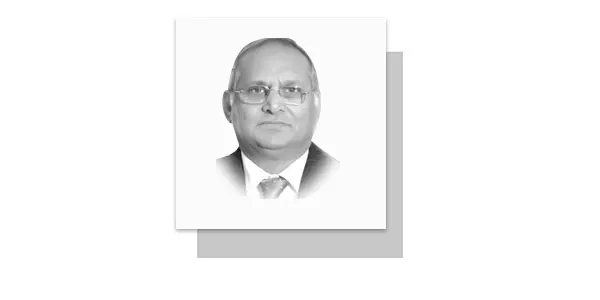Constitutions created and deteriorated in the history of Pakistan, which were modified by opportunists and dictators according to their purpose, created constitutional crises in the country. The late Nabzada Nasrullah often used to sneer at constitution-making and said that “Most of the political history of Pakistan is constitution-making and Consisting of the constitution, “They used to put a verse on it that
I am a lamp, light it and put it out.
On August 12, 1947, the founder of Pakistan Muhammad Ali Jinnah was approved to be given the official title of “Quaid-e-Azam” in the assembly session. At twelve o’clock that night, Pakistan officially came into existence as an independent country. It was decided in this meeting that until a permanent constitution of Pakistan is prepared, the Government of India Act, 1953 will remain in effect for some time. To shape the constitution of Pakistan with amendments, the Quaid-i-Azam insisted on drafting an interim constitution as soon as possible, but the one-party Constituent Assembly could not draft a constitution in seven years.
A night constitution was made in 1954, which lasted until the dawn. Nine years after the establishment of Pakistan, the first constitution of Pakistan was formulated on the basis of various clauses and resolutions, which came into effect on March 23, 1956, after ratification by President Iskandar Mirza. done, was celebrated in East and West Pakistan but this constitution was abolished under martial law on October 7, 1958, two years, and six months after its promulgation, by dressing this naked martial law in the form of the personal constitution of 1962. Enforced.
The first general elections based on adult suffrage were held in East and West Pakistan on December 7, 1970, with Mujibur Rahman’s party winning a majority in East Pakistan, and Zulfiqar Ali Bhutto’s Pakistan People’s Party winning in West Pakistan. The party had won the majority on March 25, 1969, after the military operation in East Pakistan, and on December 16, 1971, Pakistan was divided, and the country’s martial law dictator, General Yahya Khan, was at the helm.
After the fall of Dhaka, Yahya Khan entrusted martial law to Zulfiqar Ali Bhutto, the elected representative of the people. At that time, there was no constitution or constitution in Pakistan. The undemocratic and unpopular title was that of “Civil Martial Law Administrator”, which is a unique event in the history of the world.
To adopt legal and constitutional procedures to remove the shackles of Martial Law, Bhutto formed a Committee for Interim Constitution, headed by Mian Mahmood Ali Kasuri, in a short period of five months, an Interim Constitution was drawn up, which replaced the previous two constitutions. There was a presidential constitution like 1956 and 1962. In the first session of the National Assembly on April 14, 1972, Bhutto was elected President, Foreign Minister, Interior Minister, Speaker of the Assembly and Defence Minister. After coming into effect in April 1972, the martial law that had been going on since March 25, 1969 ended.
After martial law was lifted, the most important task for the Bhutto government was to draft a constitution, for which Bhutto formed a fifteen-member committee. Presented in the assembly, the political and religious parties on all the provisions of the constitution in the federal assembly unanimously approved the constitution with a majority of 135 votes, which was put into effect on August 14, 1973.
This consensus constitution was not signed by 9 members of the National Assembly, including Nawab Khair Bakhsh Marri and Ahmed Raza Kasuri, and 7 amendments were made to the constitution approved by consensus until 1977, the Qadianis amendment and another amendment unanimously. But the remaining five were passed by majority vote, General Zia-ul-Haq made the parliamentary status of the constitution controversial by passing the 8th amendment to the Non-Partisan Assembly of 1985, in which the dismissal of the government by amending Article 58/2B of the Constitution. And apart from the dissolution of the assembly, the president got the power to appoint governors and service chiefs. Under this amendment, four prime ministers and their assemblies were targeted until 1996. In 1997, when Nawaz Sharif returned to power, he The 13th amendment to the constitution. In 2002, the 17th amendment to the constitution, the 21st amendment with the 18th amendment to the constitution in 2008, which established the military courts, in the same way, the constitutions in this country Pakistan were made and deteriorated, dictatorial, and political. Today we are celebrating the golden jubilee of this constitution.









